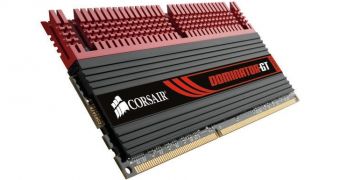Currently, desktop PCs and laptops are the products that account for the majority of DRAM memory chip sales, but not the ones that can determine if the memory industry goes up or down.
Sadly, these market segments are also stagnating, if not outright declining, which is why they don't determine the path of the DRAM industry any longer.
Instead, it falls to the mobile segment to bring some momentum, and analysts definitely believe 2013 will see something of the sort happening.
In fact, Digitimes Research thinks tablets and smartphones will cause a rise of around 72.9% in mobile DRAM, and 30% in overall DRAM demand.
Smartphones will start using more and more memory as their capabilities continue to grow. All those powerful ARM chips need RAM after all.
Average DRAM content in smartphones will expand to 0.9-gigabyte (GB). In 2012, it was of 0.7 GB.
Looking back, it isn't too hard to believe that the memory segment would take this path, although the 2010-2011 period did make people wonder.
During that time, memory just sold very poorly, or perhaps we should say manufacturers advanced their technologies and built up their inventories too quickly.
Demand just couldn't keep up, causing a constant drop in prices, almost like modules and kits were in free fall.
Only when chip makers began to tightly control production did the decline stop, and prices rebound.
Now, suspicions of foul play exists, but the average selling price continues to climb up and up, albeit not too quickly. Definitely not as fast as those of HDDs leaped when that flood hit Thailand and damaged manufacturing plants, causing fears of shortages.
For those who want an elaboration, DRAM suppliers were accused of artificially fixing prices just this month. Nothing was proven, of course, but the desire to not get burned like on the HDD market (prices jumped 300% and later it was shown that the shortage wasn't as big as anyone feared) could cause further action to be taken.

 14 DAY TRIAL //
14 DAY TRIAL //